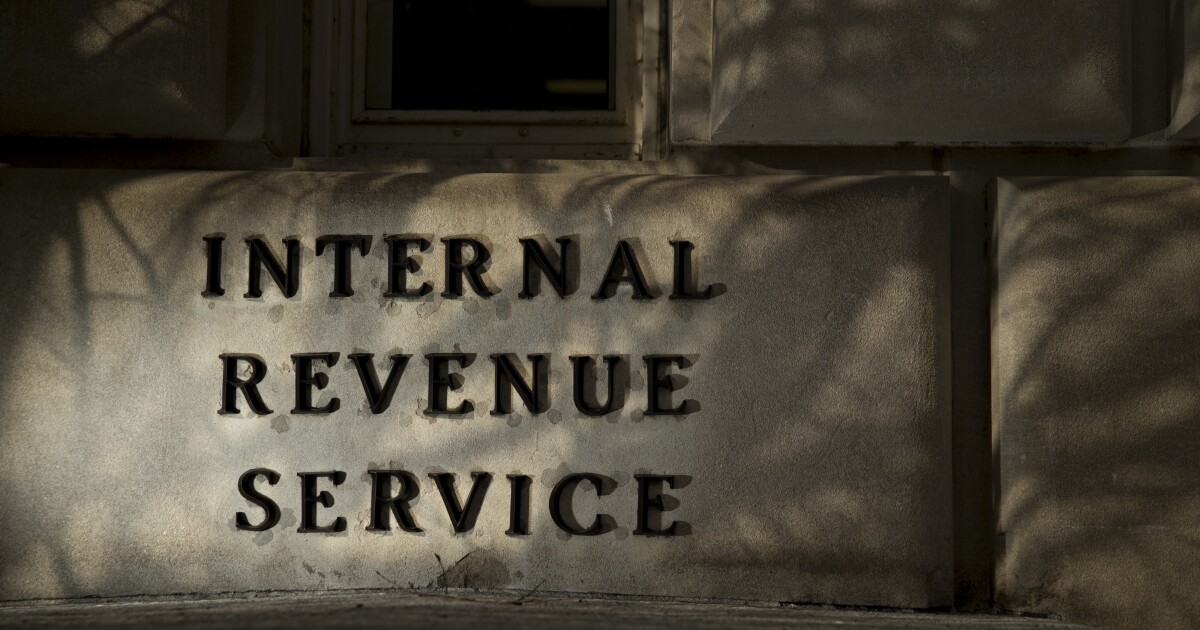The Trump administration is privately considering unleashing what advocates and critics agree would be one of its biggest cudgels yet to pressure colleges to end slews of programs and practices benefiting students who are racial minorities.
The Treasury Department is weighing a change to Internal Revenue Service policies to allow the revocation of tax-exempt status for colleges that consider race in student admissions, scholarships and other areas, Bloomberg News reported last week.
If enacted, it would take the administration’s reshaping of higher education well beyond the public battles with Harvard University and Columbia University. Nonprofit status is core to the finances of more than 1,500 private colleges and universities — from wealthy bastions such as Duke and Vanderbilt to smaller schools including Vermont’s Middlebury and Oregon’s Willamette. Revoking that wouldn’t just threaten billions in additional taxes, it would cut off the pipeline of philanthropy that has seeded and expanded schools for decades.
Even groups known to back conservative ideas were startled.
“I’ve never seen anything like this,” said Armand Alacbay, senior vice president of strategy at the American Council of Trustees and Alumni. For many universities, “losing their tax-exempt status would be existential, as they’re highly reliant on philanthropic support.”
The proposal would have to make it through an extensive rulemaking process, legal experts say, and even if the measure is put in place and the IRS seeks to revoke a college’s tax perks, the school would likely take the fight to court.
Nonprofit status frees schools from paying corporate income tax, helps them get breaks on property taxes and allows them to sell bonds that pay tax-exempt interest, reducing borrowing costs. It also boosts funding by incentivizing donors, letting them deduct gifts from their own taxes.
Trump has threatened to revoke Harvard’s tax-exempt status in posts on his Truth Social platform. He’s also signaled interest in challenging it elsewhere. “Tax-exempt status, that’s a privilege – it’s really a privilege,” Trump said in the Oval Office in April. “And it’s been abused by a lot more than Harvard, too.”
His threat was swiftly decried as out of his jurisdiction by Democrats and some Republicans. But the Treasury Department’s proposals could bring his administration a step closer toward revoking Harvard’s tax status and potentially challenging other schools if they don’t abide by officials’ demands to adopt race-blind policies and programs.
A Treasury Department representative declined to comment. The IRS didn’t respond to a request for comment.
‘Very damaging’
Many schools would find it far harder than Harvard to operate without tax-exempt status, leaving them virtually no choice but to bend to administration demands.
“If they revoked Harvard’s tax exemption, that would be damaging to Harvard,” said Adam Stern, co-head of research at Breckinridge Capital Advisors. “That would be very damaging to schools that have less resources.”
Colleges have been quietly acknowledging the growing risk to their tax exemptions. The president of Duke University called out “threats to our nonprofit status” this month in a public update on the school’s effort to reduce spending. Emory and Northwestern have mentioned similar risks in their bond documents.
“Certainly, this is a new worry they have to deal with,” said Robert Romashko, a lawyer specializing in taxes for Husch Blackwell LLP.
It comes on top of Trump administration attempts to freeze federal funding for some institutions and rein in enrollment by international students. Congress is also considering a steep tax increase for the wealthiest schools’ endowments.
Without Congress
The proposals under review in the Treasury’s Office of Tax Policy were drawn up as IRS revenue procedures — a form of guidance for interpreting and enforcing tax laws. If enacted, they would pave the way for the IRS to bar nonprofit schools from remaining tax exempt if they favor any racial groups in matters such as financial assistance, loans, use of facilities or other programs, according to people with knowledge of the deliberations. They could take effect without congressional approval.
The proposals would amount to a “sea change” in the IRS’s rules for nonprofits, said Philip Hackney, a law professor at the University of Pittsburgh who spent time in the agency’s office of the chief counsel. Schools that have helped minority groups narrow historic gaps in wealth and education in the U.S. could end up getting punished for those efforts.
“Charity has long included an idea of remedying discrimination,” he said. “This would be a monumental change in terms of charitable law. We’ve built the whole structure on that basis, and the idea of saying all of that stuff was wrong seems incoherent.”
Critics split
News of the proposals has stirred excitement among some conservative activists encouraging the administration’s efforts to end diversity, equity and inclusion programs in higher education.
“The Treasury Department should absolutely enact this policy of stripping tax-exempt status from universities that discriminate on the basis of race,” Christopher Rufo, one of the preeminent voices of that movement, wrote on X. “No quarter for left-wing racialism in America’s institutions.”
The American Council of Trustees and Alumni has also criticized universities over DEI policies and hiring practices that they allege take race and other protected characteristics into account. Still, Alacbay warned that using tax status as a lever could open a “Pandora’s box” with far-ranging consequences as future administrations pursue their own agendas.
“One should be very circumspect about using tax law as a lever to enforce other public policies,” Alacbay said. “There are many other, more established ways to enforce civil rights laws. I would say let those existing enforcement mechanisms play out.”
Others welcome the idea of the IRS playing a more active role, which could extend to other controversial topics.
“It’s very easy to see how a policy would apply beyond race” to issues like gender and gender identity, said Adam Kissel, a visiting fellow in The Heritage Foundation’s Center for Education Policy. While enforcement might veer from administration to administration, he said, that’s the reality of a messy democratic process “in the absence of clear guidance and language from Congress.”
‘It’s alarming’
For the proposal to become established as an enforceable revenue procedure, it would have to work its way through the lengthy requirements of the Administrative Procedure Act, according to Megan Brackney, a tax controversy attorney and partner at Kostelanetz LLP. That includes issuing a formal notice, allowing affected parties to provide feedback, then reviewing and addressing the comments before finalizing the revenue procedure.
“It’s alarming, but there’s a lot that has to happen for this change to be made if they really decide to go through with it,” she said. “It doesn’t mean they can’t do it, they just can’t do it tomorrow.”
The Trump administration has run into this before. In 2018, the IRS wanted to drop rules requiring some nonprofits to identify major donors in their tax filings. A federal judge blocked the change, saying the agency had to obey the Administrative Procedure Act before updating the rules.
If the IRS’s internal guidance is changed, it still needs to follow the law to find the basis to legitimately revoke a school’s tax exemption, Hackney said. And despite Trump’s views, Congress and judges haven’t declared DEI efforts broadly illegal or unconstitutional, he said.
Charities also lose their tax perks by violating a fundamental public policy. That standard was set in 1983 when the Supreme Court upheld the IRS’s authority to revoke Bob Jones University’s tax exemption, citing policies banning interracial dating on campus.
Ellen Aprill, a retired law professor and senior scholar in residence at the University of California at Los Angeles’ law school, said it’s hard to argue that Trump’s stance against DEI constitutes a fundamental public policy.
“The anti-DEI policy from the executive branch is one we’ve only seen in the months since Trump took office for a second time,” she said. “Can you imagine the whipsaw if all nonprofits had to adapt to the new positions of the executive branch?”
It would likely take years for the IRS to ultimately revoke a school’s tax benefits through a long, established process including audits and opportunities for remedy, appeals and challenges in court.
Meanwhile, Brackney said, the proposal may have an impact on schools, even if it never gains legal teeth.
“It has an effect to wind everybody up and make everybody nervous to change their behavior, even before the government takes the appropriate action to make it an enforceable rule,” she said.


 Accounting1 week ago
Accounting1 week ago
 Personal Finance1 week ago
Personal Finance1 week ago
 Personal Finance1 week ago
Personal Finance1 week ago
 Economics1 week ago
Economics1 week ago
 Finance1 week ago
Finance1 week ago
 Economics6 days ago
Economics6 days ago
 Economics6 days ago
Economics6 days ago
 Economics6 days ago
Economics6 days ago











